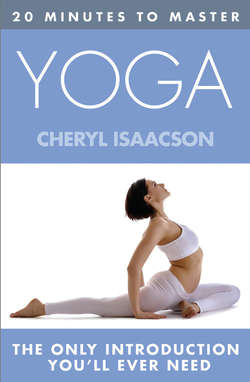Читать книгу 20 MINUTES TO MASTER ... YOGA - Cheryl Isaacson - Страница 10
ОглавлениеCHAPTER 2
THE ORIGINS OF YOGA
Some forms of yoga can be traced back 2,500 years, while others are said to be medieval. Physical, or Hatha yoga, probably dates from around the tenth century AD.
THE VEDIC AGE
Between 1,800 BC and 1,000 BC the Indus Valley was inhabited by Sanskrit-speaking tribes known as the Vedic people. They give us our first firm links with yoga. Hymns dating from that time (such as the Rig Veda and the Atharva-Veda) describe practices which we would recognize as powerful meditations. In fact the origins of all the ideas that we think of as ‘yogic’ are here.
Terracotta seals have been found in the Indus valley, dating from around 3,000 years ago. These show figures, probably ancient gods, sitting in recognizably yogic postures, such as the famous lotus pose, with legs folded, hands on their knees and the feet crossed one on top of the other.
THE INDIAN EPICS
The six main branches of Indian philosophy arose around 600–500 BC. Then, from about 8 BC a more mystical trend developed with the writing of yoga’s most important literary works, the Upanishads. These describe developments within the whole Hindu culture, which was just beginning to form its own religious identity. Along with the Upanishads, the national epics of India, the Ramayana (5th or 6th century BC) and the Mahabharata (5th century BC), are important. The Mahabharata contains the Bahagavad Gita, a treatise that looks at the central yogic precept of non-attachment to material things. It also contains another section on yoga theory.
YOGA THROUGH THE AGES
These texts have been added to and developed through time, and through the ages yoga has embraced a great variety of teachings, writings and practices. The most famous person to expound on yoga from a philosophical point of view was Patanjali, who wrote the Yoga Sutras some time between 200 BC and 200 AD. He condensed yogic wisdom into a series of brief aphorisms on spiritual practice and power, still highly relevant today. With yoga, spiritual unity seemed to be accessible through anything from sexual bliss to total isolation. But the ultimate goal of all these practices was enlightenment.
HATHA YOGA
Physical yoga (usually called by its Sanskrit name, Hatha yoga) developed in the tenth century AD, when a legendary charismatic healer and celibate called Goraksha wrote a work called Hatha-Yoga. This became a standard text which was developed and added to until the mid-14th century, when Hatha Yoga Pradipika, the best-known work of classical yoga practice, appeared. It describes the basic cleansing methods of the body, breath control methods, energy-controlling hand positions, and ways of holding the body to intensify life energy. It also goes through in detail the postures as we know them today.
In the 19th century Queen Victoria was very interested in yoga and would summon Indian sages to perform their strange body contortions.
THE RISE OF MODERN YOGA
Yoga really took off in the West after Swami Sivananda, one of the great Indian yoga practitioners, decided to spread yoga’s message in the 1950s. The time was right – spiritual ideas were becoming fashionable, along with interest in self-development and the growth of health and body consciousness. Yoga was the ideal way to incorporate all these, and the 1960s and 1970s saw an enormous growth in the yoga ‘industry’. Other modern masters who have influenced yoga in the west are BKS Iyengar, Desikachar and Pramahamsa Yogananda, who inspired many Westerners on the spiritual yogic path with his book, Autobiography of a Yogi.
YOGA TODAY
Gone are the days when doing yoga meant dedicating your life to weird and wonderful practices or isolating yourself from family and friends. Today, the most separation from normal life that comes about is usually just an hour or so at a yoga class, once a week. But this is not to put down modern yoga teaching. Relaxation, peace of mind, health and fitness may be the main aims of the modern yoga student, but the age-old goals of connecting with a spiritual sense and broadening your consciousness are still very possible.
